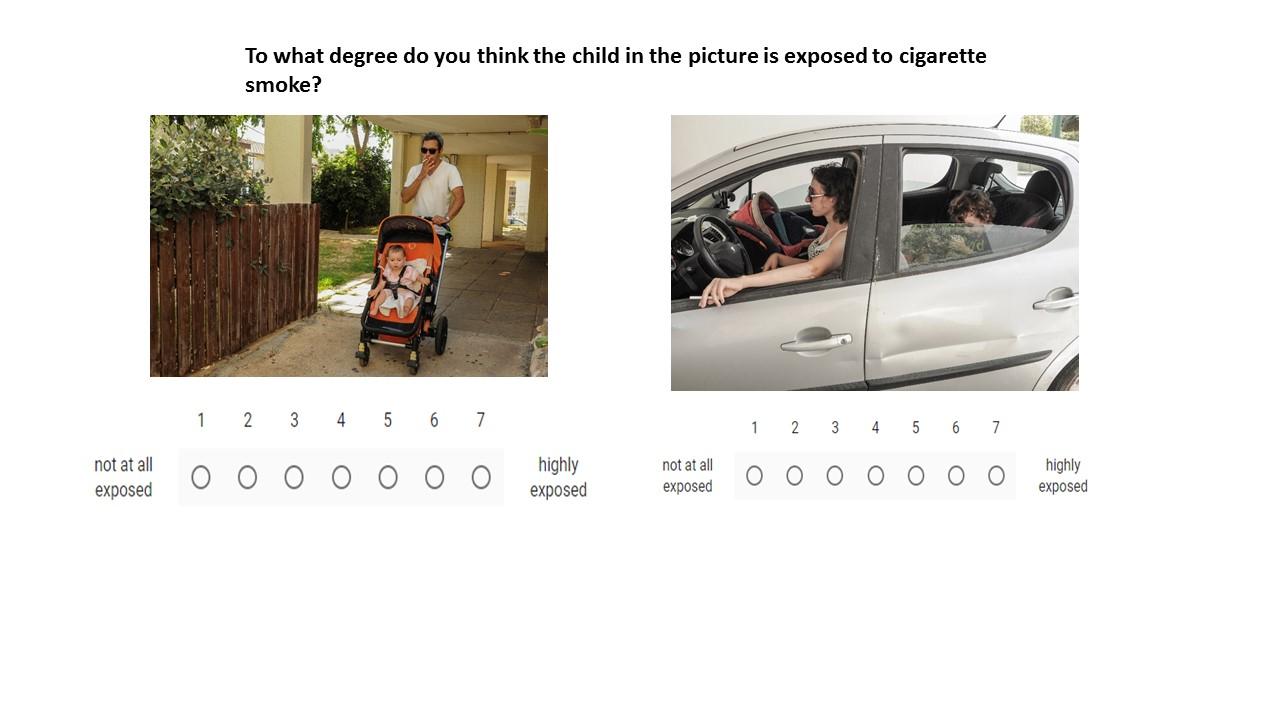Recent manuscripts
Archive
Editorial Board
Aims and Scope
Open Access
Indexing
Contact us
Authorship & COI
Principles of Transparency Checklist
Publication Ethics
Crossmark
Data Policies
Supporting Diversity
Instructions to authors (PDF)
Manuscript Types
Manuscript Formatting
How to submit
Special Publications & Reprints
Preprints
Parental perceptions of exposure to tobacco smoke: a new tool to shed light on parental smoking behaviour
1
Tel Aviv University, Health Promotion, School of Public Health, Israel
2
Tel Aviv University, School of Psychological Sciences, Israel
Publication date: 2018-03-01
Tob. Induc. Dis. 2018;16(Suppl 1):A147
KEYWORDS
TOPICS
ABSTRACT
Background:
Around 40% of children worldwide are exposed to tobacco smoke by their parents. Interventions to reduce exposure have limited success. Parental reports often do not match biomarker reports of children's exposure. We propose there may be a fundamental misunderstanding among smoking parents as to what exactly exposure is and in what circumstances exposure occurs.
We aimed to develop and validate a tool to assess and quantify parental perceptions of exposure (PPE) regarding children´s exposure to tobacco smoke.
Methods:
Qualitative research with smoking parents revealed common misperceptions: eg. exposure is avoided when smoking at the window, with a child in stroller, or in the car before collecting children. A model was developed and a questionnaire constructed using pictures and vignettes of different situations in which children are exposed to smoking. Parents rated exposure of a hypothetical child in each situation on a scale of 1-7. Psychometric properties were assessed including exploratory factor analysis, test-retest reliability and Cronbach's alpha coefficient.
Results:
220 parents completed the questionnaire. Factor analysis produced 6 factors for parental perceptions of exposure (PPE), explaining a cumulative total variance of 76.3%. Factors were named: 1)secondhand exposure; 2)thirdhand exposure; 3)knowledge/certainty; 4)sensory perceptions; 5)time; 6)distance. Test-retest showed high correlations of PPE: r=0.856, p< 0.001. Correlation between PPE and parental risk perceptions (PPR) was significant (0.766 p< 0.001). Smokers scored significantly lower than non-smokers on PPE and PPR signifying a narrower definition of exposure, definition of fewer situations as involving greater exposure, and attaching less risk to these situations (p< 0.001).
Conclusions:
The PPE tool was demonstrated as valid and reliable. Smokers and non-smokers had different perceptions of exposure. This tool can shed light on parents' smoking behaviour around their children, may explain discrepancies between parental and objective reports of exposure and may ultimately help change parental smoking behaviour by altering parental perceptions of exposure.

[Excerpt from Parental Perceptions of Exposure tool]
Around 40% of children worldwide are exposed to tobacco smoke by their parents. Interventions to reduce exposure have limited success. Parental reports often do not match biomarker reports of children's exposure. We propose there may be a fundamental misunderstanding among smoking parents as to what exactly exposure is and in what circumstances exposure occurs.
We aimed to develop and validate a tool to assess and quantify parental perceptions of exposure (PPE) regarding children´s exposure to tobacco smoke.
Methods:
Qualitative research with smoking parents revealed common misperceptions: eg. exposure is avoided when smoking at the window, with a child in stroller, or in the car before collecting children. A model was developed and a questionnaire constructed using pictures and vignettes of different situations in which children are exposed to smoking. Parents rated exposure of a hypothetical child in each situation on a scale of 1-7. Psychometric properties were assessed including exploratory factor analysis, test-retest reliability and Cronbach's alpha coefficient.
Results:
220 parents completed the questionnaire. Factor analysis produced 6 factors for parental perceptions of exposure (PPE), explaining a cumulative total variance of 76.3%. Factors were named: 1)secondhand exposure; 2)thirdhand exposure; 3)knowledge/certainty; 4)sensory perceptions; 5)time; 6)distance. Test-retest showed high correlations of PPE: r=0.856, p< 0.001. Correlation between PPE and parental risk perceptions (PPR) was significant (0.766 p< 0.001). Smokers scored significantly lower than non-smokers on PPE and PPR signifying a narrower definition of exposure, definition of fewer situations as involving greater exposure, and attaching less risk to these situations (p< 0.001).
Conclusions:
The PPE tool was demonstrated as valid and reliable. Smokers and non-smokers had different perceptions of exposure. This tool can shed light on parents' smoking behaviour around their children, may explain discrepancies between parental and objective reports of exposure and may ultimately help change parental smoking behaviour by altering parental perceptions of exposure.

[Excerpt from Parental Perceptions of Exposure tool]
Share
RELATED ARTICLE
We process personal data collected when visiting the website. The function of obtaining information about users and their behavior is carried out by voluntarily entered information in forms and saving cookies in end devices. Data, including cookies, are used to provide services, improve the user experience and to analyze the traffic in accordance with the Privacy policy. Data are also collected and processed by Google Analytics tool (more).
You can change cookies settings in your browser. Restricted use of cookies in the browser configuration may affect some functionalities of the website.
You can change cookies settings in your browser. Restricted use of cookies in the browser configuration may affect some functionalities of the website.

